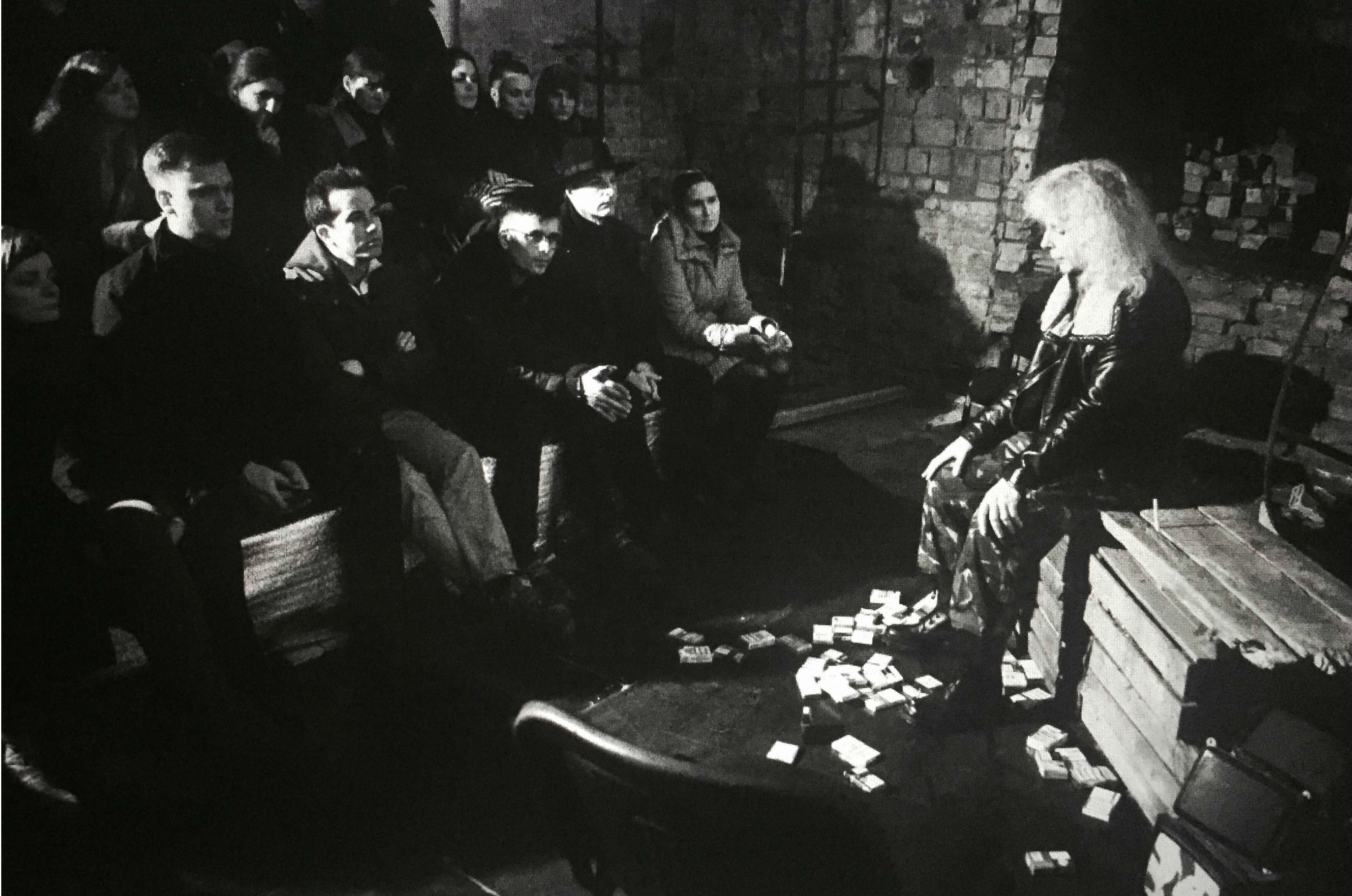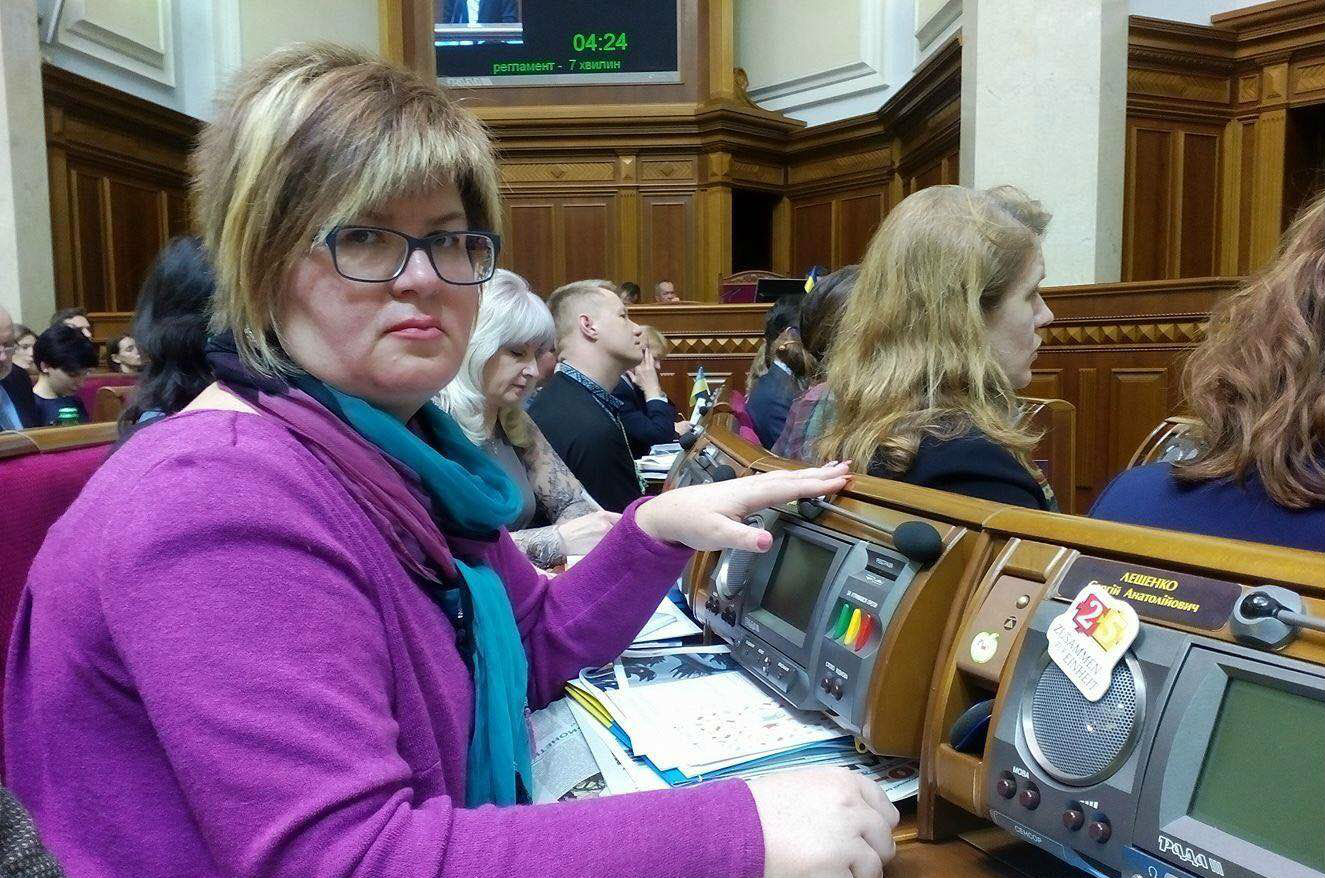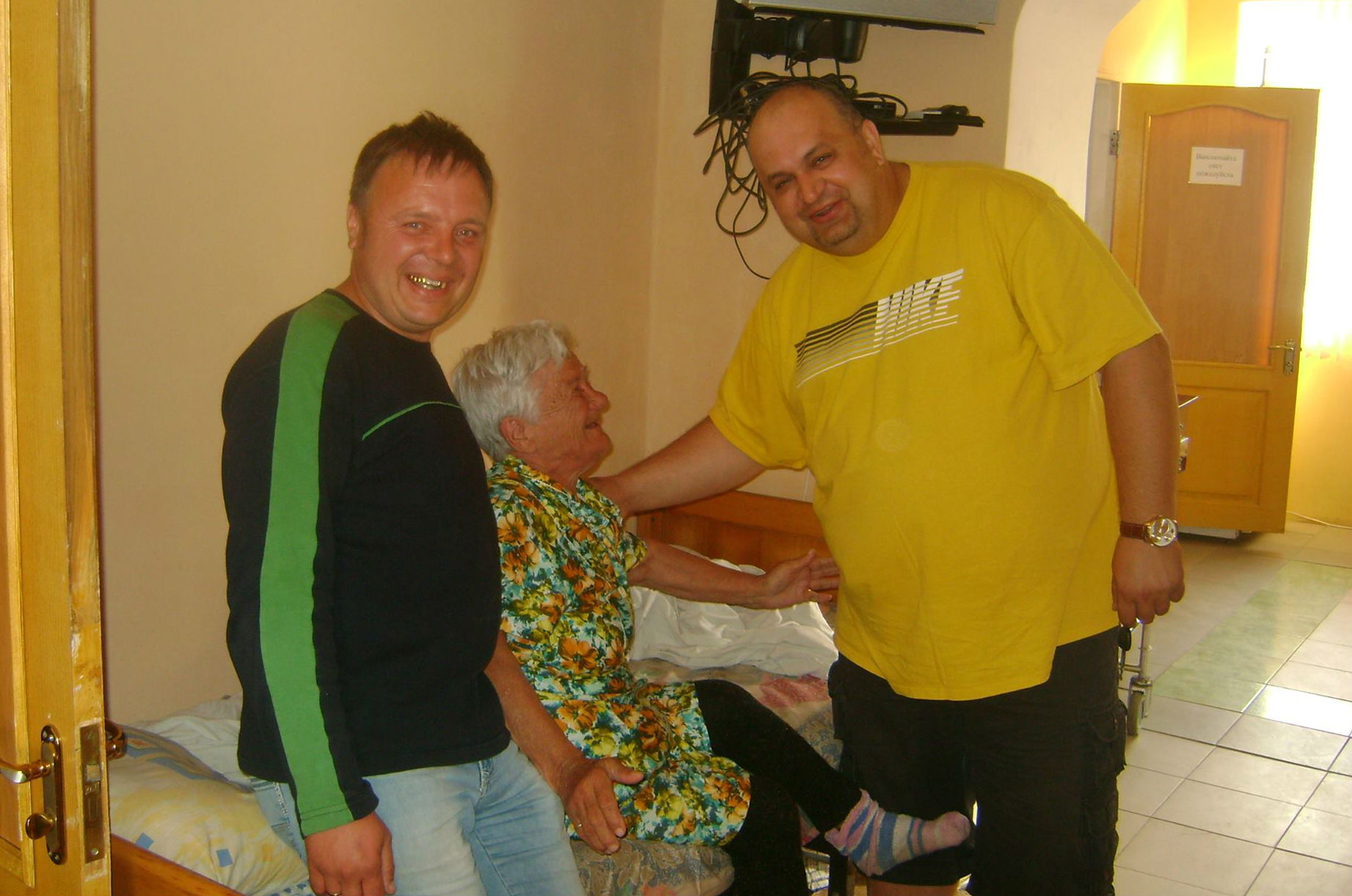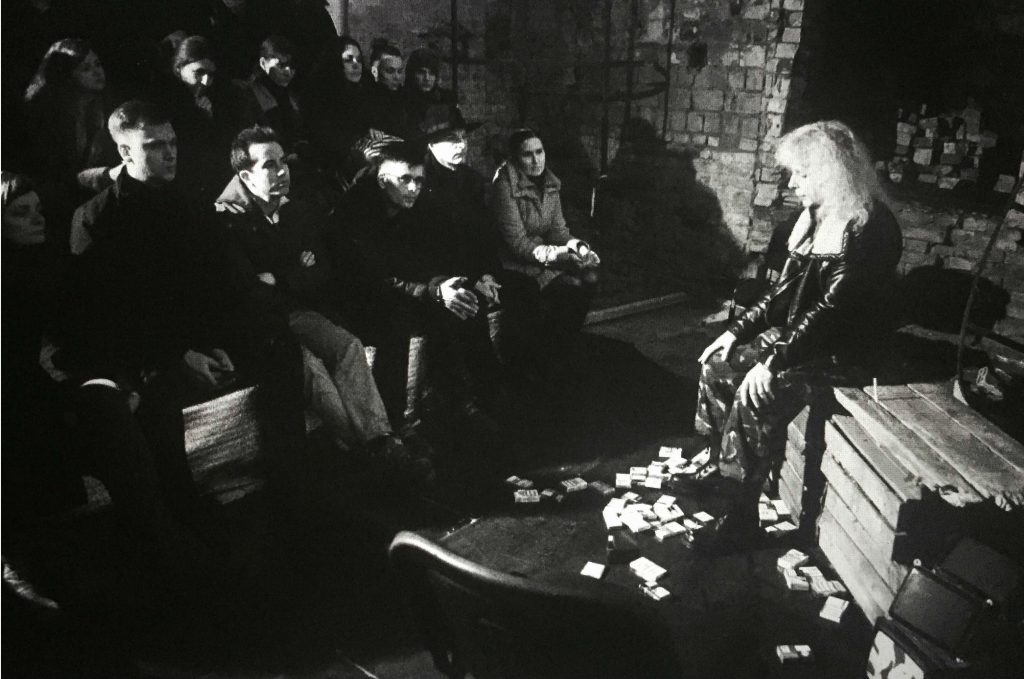 Two years ago this past April, the words “internal displacement” first appeared in the Ukrainian media. The term was brought by UN agencies that, along with local nongovernmental organizations, worked on a legal framework to regulate the phenomenon, which was completely new to Ukraine. Before then, journalists, volunteers, and even government officials called those who were fleeing occupied Crimea or hostile areas in eastern Ukraine “refugees” or “migrants.” Ukraine now has 1.7 million internally displaced persons.
Two years ago this past April, the words “internal displacement” first appeared in the Ukrainian media. The term was brought by UN agencies that, along with local nongovernmental organizations, worked on a legal framework to regulate the phenomenon, which was completely new to Ukraine. Before then, journalists, volunteers, and even government officials called those who were fleeing occupied Crimea or hostile areas in eastern Ukraine “refugees” or “migrants.” Ukraine now has 1.7 million internally displaced persons.
Today, three IDPs in Ukraine share their memories of how they left their homes, how the past two years have changed their lives, and what needs to be done to reintegrate IDPs.
Galina Dzhikayeva, Simferopol
“I did not want to leave, but they left me no choice,” sighs Galina Dzhikayeva, a former director of the Karman art center in Simferopol. When Russian soldiers lacking insignias first appeared on the streets of Sevastopol, she began organizing pro-Ukrainian meetings. Later, she collected food and medication for Ukrainian sailors, and assisted the first international journalists covering the events.
“In case my worst fears came true and war began, I organized first aid courses in our theatre,” says Dzhikayeva. “They accused me of terrorist activities as a part of the ‘Oleg Sentsov terrorist group.’” Sentsov is the Simferopol filmmaker who was jailed by the FSB on suspicion of plotting terrorist acts in Crimea.
Members of the battalions invited Dzhikayeva to an “informal conversation,” the kind that was once routine for the Soviet-era intelligence service. “The conversation lasted three hours. They used tough psychological pressure; they wanted me to testify against Sentsov and other activists. I said and I signed nothing, because any word I said would have been used against us.”
Dzhikayeva left Crimea a few days later. “All the way to Odesa I thought I would cry and kiss Ukrainian soil when I saw our flags, but I did not. Only when my mother sent me some of my things from Crimea did I finally understand what happened and started to cry.”
Dzhikayeva’s parents could not move to the mainland because her father is confined to bed. Galina herself has not registered as an internally displaced person, nor has she applied for social assistance. “I have my hands and I have my brain, so I will earn money,” she says. She also has a theatre, and that gives her hope and strength.
In her most controversial play, “Militiaman,” she plays a pro-Russian man from Donetsk who captured, tortured, and killed Ukrainian soldiers. Through discussions with the public she tries to understand what motivates him, and aims to find an approach that will help people like him reintegrate when the war ends.
The theater is located in an old building in the historic part of Kyiv. “When we played in December, the walls were covered with ice. Still, we were sold out—the audience sat fully dressed under electric heaters,” Dzhikayeva smiles. The theater does not bring money. To survive, she works as a managing editor at a local TV channel. But she says she is lucky because she has enormous support, and inspiration from her art.

Iryna Stepanova, Slovyansk
“For two years, I’ve felt like I’m living in a horror movie, waiting for it to end,” says Iryna Stepanova. Before the occupation, she worked as an engineer at a local plant and regularly went to church. She and her family belonged to a Protestant community that pro-Russian militia targeted, considering them sectarians.
Combatants converted her church into an armory and a firing point. “My children went to school twenty meters away from the armed barricade. I feared the worst—a repetition of the Beslan tragedy, when terrorists entered a school and shot kids. So my children stopped going to school.”
In early May 2014, Stepanova’s church organized an evacuation for women in the Protestant community with children. “There were about twenty of us,” she recalls. “When we were about to leave, some women came to stop us. They yelled at us and rocked the bus. The route to Dnipropetrovsk [about 231 km] took us twenty hours. When I finally saw Ukrainian flags, we started crying.”
From Dnipropetrovsk, Stepanova moved to a small town near Kyiv where she settled in a hostel. She was part of one of the first waves of IDPs fleeing occupied areas. Back then, prejudices against IDPs had not yet formed. She cries recalling how generous everyone was. “Once a local pastor came to our hostel,” she says. “He asked if we had children and pregnant women. We did. The next day at 6:00 am, the pastor brought us fresh milk and cheese; he did so every day for two months.”
Stepanova began going to local volunteer organizations, NGOs, and regional administrations and councils to meet people and offer her help. Soon, members of the Ukrainian parliament, ministers, and representatives of international media became her friends. “Some MPs truly surprised me by showing their human faces—many times they would come to IDP settlements with trucks loaded with food, medication, and other essentials,” and they came without journalists.
She returned to destroyed Slovyansk immediately after its liberation. She became involved in volunteer activities and the social life of her town. “Once I was asked to accompany the Swedish Ambassador to Ukraine to basements where pro-Russian militia had kept prisoners. The ambassador’s brother was part of an international organization’s team who had been kidnapped and kept there for several days. It was horrible; the walls were scribbled with blood of prisoners.”
In July 2014, the All-Ukrainian Charitable Foundation “The Right to Protection,” a Ukrainian NGO, invited Stepanova to join a project assisting internally displaced people, where she remains today. She fears that someday she might be forced to leave home again, as the front line slowly moves toward Slovyansk.

Oleg Gorbachev (left), Alchevsk
Oleg Gorbachev is one of the founders of a hospice for elderly people; it helped homeless people, older Ukrainians, drug addicts, and other vulnerable groups. When the conflict broke out in eastern Ukraine in April 2014, the hospice was at the epicenter of the hostilities, and pro-Russian militia began plundering it. It was the only home for its patients, some of whom were bedridden. “I decided to evacuate people, although the thirty hour route to Kyiv seemed unachievable,” says Gorbachev.
But he made it. He managed to evacuate twenty pensioners from Artyomovsk and the so-called “gray zone”—towns along the front line governed by neither the pro-Russian militia nor the Ukrainian army. “I even transported a deceased grandfather from the hospice who died right before the evacuation.” Gorbachev did not have any means of transportation except an old, Soviet-era Volga automobile. He drove the deceased patient, who sat in the backseat of the Volga, to the government-controlled area to bury him respectfully.
Gorbachev is an IDP himself. He and his family left the home where they had happily lived before the war. Still, he does not have time to despair; he has to take care of the twenty pensioners he evacuated.
Today they live in a small town near Kyiv, while he actively seeks a new site for the hospice. “We are short on money,” he says. “Of course, I do fundraising. Every day I have a number of meetings, calls, I send hundreds of emails, but I have the impression that the government does not know what to do with us.”
Conclusion
Most IDPs are not like Galina Dzhikayeva, Iryna Stepanova, and Oleg Gorbachev, and most need care. Many IDPs in Ukraine, especially those living in remote areas, feel helpless as the war drags on. Over the last two years, IDPs have learned that they can rely on volunteers, local and international NGOs, and the media. Many feel abandoned by the government because it has been reluctant to help them and does not communicate well. Some IDPs are still unaware of their rights. Good communication might motivate IDPs to take responsibility for their lives by looking for new jobs or taking courses to learn a new skill.
NGOs are busy providing legal work and social assistance, but the government has put unnecessary obstacles in their way, from making it difficult for relief organization to enter areas that aren’t controlled by the government to dragging its feet on official legislation to narrowing the rights provided by the law on IDPs to introducing cumbersome bureaucratic procedures. Ideally, the government should accept nongovernmental actors as full partners and communicate its policies more clearly. Minister of Social Policy Andriy Reva recently noted that 350,000 IDPs don’t receive pensions and more than 15,000 do not receive social payments all due to “inconsistencies in legislation.” It’s time to finally get on top of these problems. Ukraine’s most vulnerable people deserve nothing less.
Kateryna Moroz is an alumna of the University of Miami School of Law and a Fulbright scholar.
Image: Galina Dzhikayeva, an internally displaced person, from Simferopol, Ukraine, performs at her theater in Kyiv. In her most controversial play, “Militiaman,” she plays a pro-Russian man from Donetsk who captured, tortured, and killed Ukrainian soldiers. Through discussions with the public she tries to understand what motivates him, and aims to find an approach that will help people like him reintegrate when the war ends.

